Pride 2023

Bali White
Principal Strategist
Sexual and Gender Minority
Message from our Strategist
Please join our NIH community in celebrating Pride this year with EDI’s theme of “Advancing Equality and Visibility for All.” The theme centers around visibility and safety, concepts that are of the utmost importance to us, to EDI, and to NIH leadership.
We are working together to ensure that everyone, including sexual and gender minorities (SGM) experiences a workplace where they are seen and heard, and feel safe here at NIH. SGM broadly references, but is not limited to, those who identify as LGBTQIA+. In addition, SGM encompasses populations whose sexual orientation, gender identity, or reproductive development is considered not to align with cultural, societal, or physiological norms.
The proportion of U.S. adults who consider themselves to be lesbian, gay, bisexual, transgender, or other identities represented under the LGBTQIA+ umbrella is growing at a faster pace than in prior years. In fact, the proportion of LGBTQIA+ Americans should exceed 10% soon with one in ten Millennials and one in five Gen Z members identifying as LGBTQIA+. Here at NIH, we recently made it a priority to initiate conversations toward making the agency a more equitable and inclusive place for all, including SGM (log in to VPN to view video).
We invite you to continue the conversation by participating in our Pride events and celebrating, this month and always, the work our community and allies have done to get us this far. Although the community’s progress is undeniable, the present is full of opportunities to effect lasting change and we can do it—together.

Lawrence A. Tabak, D.D.S., Ph.D.
Acting Director
National Institutes of Health
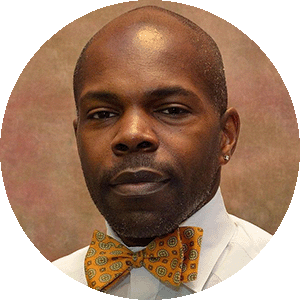
Kevin D. Williams, Esq.
Director
EDI
Message from Leadership
Dear Colleagues,
This June, we are honored to recognize Pride Month at the National Institutes of Health (NIH), which is a time to both celebrate and acknowledge the lived experiences of Lesbian, Gay, Bisexual, Transgender, Queer, and Intersex (LGBTQIA+) people everywhere.
In honor of this year’s Pride theme, Advancing Equality and Visibility for All, we will highlight the agency’s efforts to address some of the issues raised during our first Diversity, Equity, Inclusion, and Accessibility Town Hall as well as the Sexual and Gender Minority (SGM) Listening Session (log into VPN to view). We discovered that our SGM colleagues felt unseen, undervalued, as well as unsafe in some spaces across various Institutes, Centers, Offices, and regional worksites.
Listening to our NIH community is essential to fostering an atmosphere where all individuals enjoy the same access to a safe and supportive work environment. NIH remains committed to ensuring equal opportunity and embracing diversity, thereby facilitating innovative research, through action. We uphold our pledge to respect all employees, regardless of sex, sexual orientation, and gender identity, through the recognition and appreciation of their unique skills, talents, and abilities.
As part of that commitment, the Office of Equity, Diversity, and Inclusion (EDI) invites you to several events highlighting the diverse lived experiences and careers of LGBTQIA+ community members. We begin the observance month by raising the Pride flag over Building 1 on June 1. Then on June 7, we welcome you to attend the in-person and virtual panel, Building Your NIH Career With Pride. This event will feature the stories of several LGBTQI+ individuals who have built their careers at NIH. EDI will close out the month with a second hybrid panel discussion entitled: Pride in Federal Service, on June 28.
We encourage you to visit the EDI Pride 2023 page to learn more about these events and to discover more about the perspectives of SGM communities. Additionally, EDI offers Safe Zone training on its SGM Portfolio page. You can follow the office on LinkedIn and Twitter, and you can watch EDI’s YouTube channel to stay informed of the exciting things happening this month and in the future.
Last, I am excited to share that the NIH Sexual and Gender Minority Research Office (SGMRO) will be hosting numerous events throughout the month to highlight advances made in SGM health research and to launch new resources seeking to enhance the inclusion and representation of these populations in research. More information regarding these events can be found on the SGMRO Pride at NIH webpage.
I hope you will join us in observing Pride Month, celebrating the broad diversity of SGM communities, and recognizing the work that remains in both increasing inclusion of LGBTQI+ populations in the work that we do and in understanding and reducing health disparities within these communities.
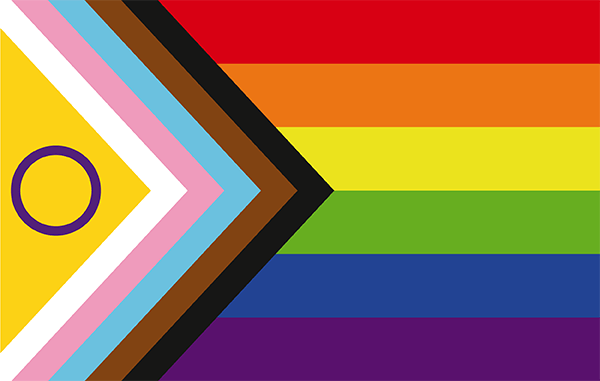
Intersex columnist Valentino Vecchietti designed the Intersex-Inclusive Progress flag in 2021.
About the Intersex-Inclusive Progress Pride Flag
The Evolution of the Pride Flag
The design of the Pride flag has evolved over many years. The original Pride flag was created by Kansas native, Gilbert Baker. Each of the six stripes carries an individual meaning: red is life, orange is healing, yellow is sunlight, green is nature, blue is harmony or serenity, and purple is spirit. The image shown here is the latest iteration of the Pride flag, which was designed by Intersex columnist, Valentino Vecchietti in 2021. This flag incorporates a small yellow triangle with a purple circle on the left side of the chevron to symbolize the Intersex Pride flag (learn more at https://morgancarpenter.com).
What do the design elements found in the flags mean?
The chevron shape resembles an arrow pointing forward – our collective journey toward progress.
The Progress flag is inclusive of transgender, nonbinary, and intersex individuals represented by light blue, light pink, and white.
The brown and black stripes stand for communities of color.
The black stripe remembers individuals impacted by AIDS, both those who have been lost and those who continue to live with the condition today.
The choice of yellow and purple intentionally avoids colors that reference gender stereotypes.
The unbroken circle rejects symbols that represent gender and signifies wholeness and completeness.
To learn more about each of the Pride flags, visit https://www.hrc.org/
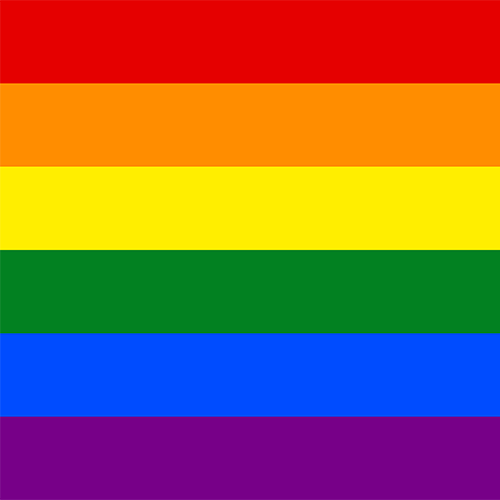
Traditional Pride Flag

Progress Pride Flag
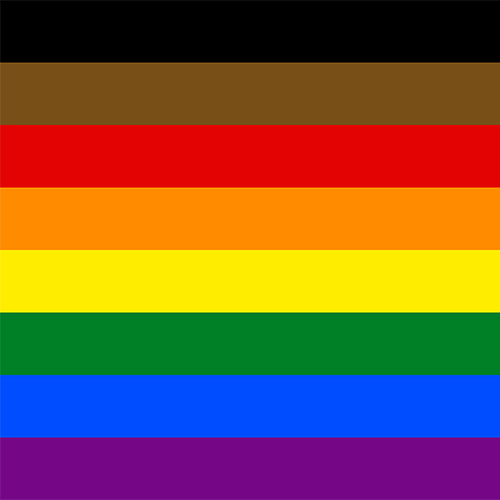
Philadelphia Pride Flag
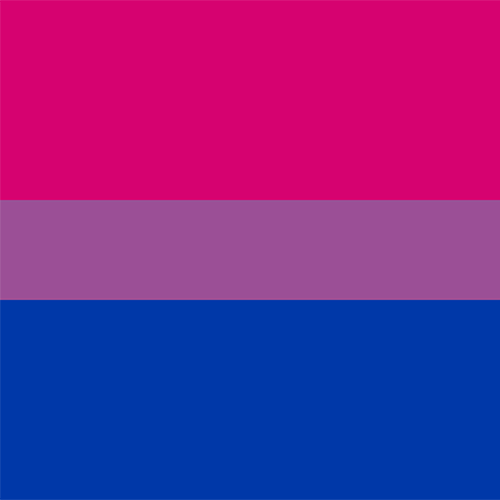
Bisexual Pride Flag

Pansexual Pride Flag
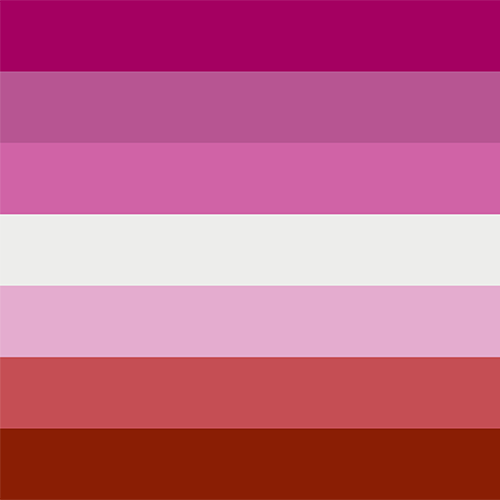
Lesbian Pride Flag

Asexual Pride Flag
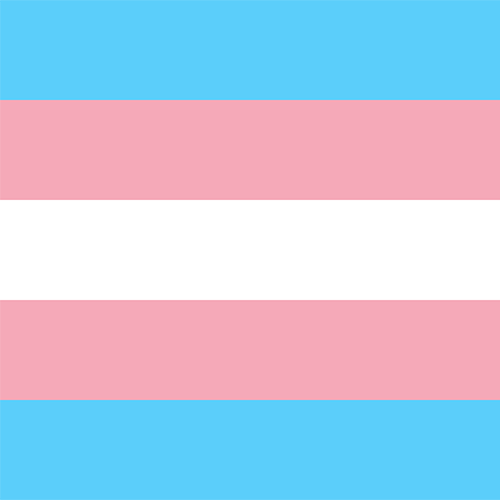
Transgender Pride Flag

Polysexual Pride Flag

Nonbinary Pride Flag
Featured Stories
Events
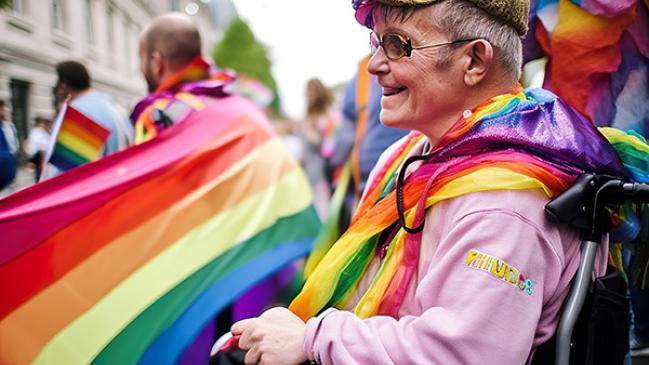
2023 Pride Parade





